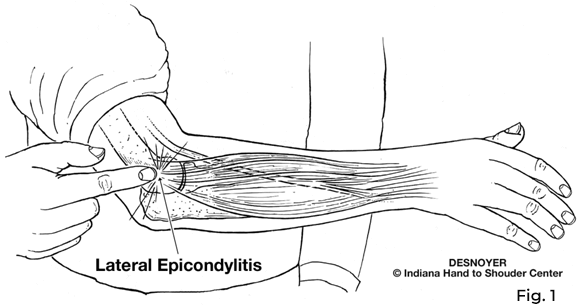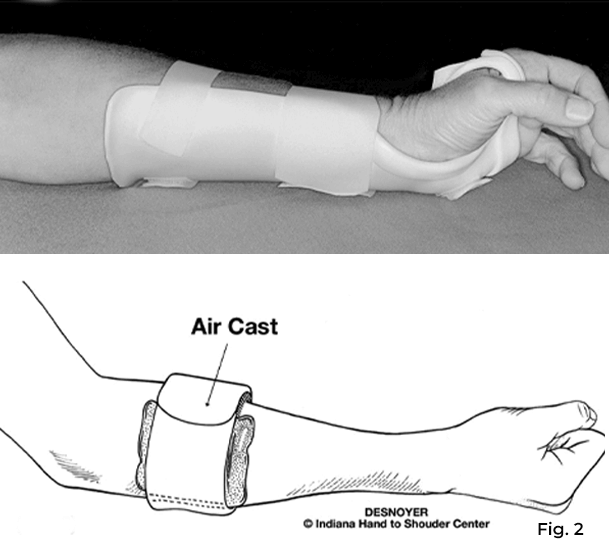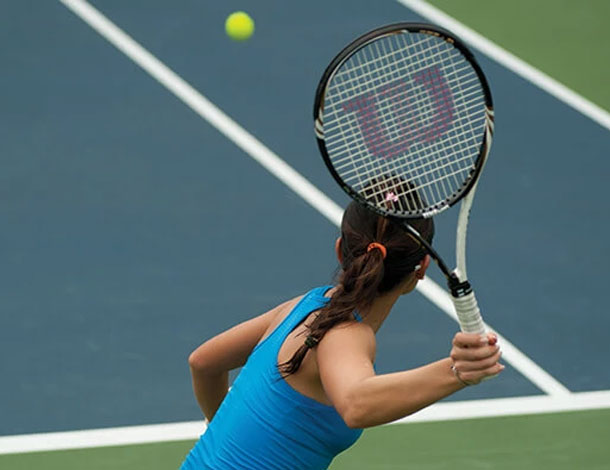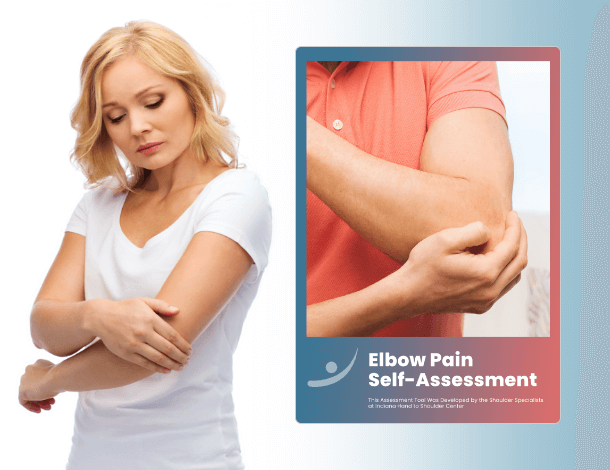What Is Tennis Elbow?
You don’t have to be an athlete or even pick up a tennis racket to develop this condition. So, what is tennis elbow, and who is at risk

Tennis elbow is a generic term describing the degeneration of tendon fibers that arise from the bony prominences on the elbow’s outside (lateral) or inside (medial). (Fig. 1)
What Are the Causes?
Tennis elbow most commonly occurs in patients between 30 and 50 years of age as a natural aging process that can be aggravated or influenced by repetitive activities. Some patients may develop symptoms without any specific etiology or after simply bumping the side of their elbow. About half of athletes in racquet sports will develop symptoms of tennis elbow.
Occupational and home causes include raking, painting, meat cutting, and plumbing, or repetitive carrying of objects such as suitcases, briefcases, tool bags, etc. The condition doesn’t relate to inflammation. As individuals age, degenerative tears in the tendon origins may fail to heal.
Other pathology about the elbow can be confused with what is tennis elbow syndrome, including pressure on the radial nerve in the region of the elbow (radial tunnel syndrome), instability of the elbow, or arthritis of the elbow.
What Are the Signs and Symptoms?
Patients complain of burning or achy pain on the side of their elbow that is aggravated by grasping or lifting objects. With lateral tennis elbow, even lifting a light object, such as a coffee cup or book, can lead to significant pain.
Patients often experience discomfort initially extending or straightening their elbow in the morning and are particularly symptomatic grasping or carrying with their arm extended or picking up objects with their palm down (pronation).
Lateral tennis elbow patients will have tenderness on and around the bony prominence outside the elbow. Patients will experience pain on grasp with the elbow extended, which is perceived as more significant than when the elbow is flexed. Pain is often elicited by resistance to lifting or extending the wrist and fingers back against pressure.
The medial tennis elbow shows tenderness on and around the bony prominence inside the elbow. It is usually exacerbated by resisting pressure of wrist flexion and forearm pronation (twisting the forearm into the palm-down position). It is commonly associated with golf, weight lifting, and racketball.

Diagnosing What Is Tennis Elbow
X-rays are usually unnecessary unless there is a concern for underlying arthritis or the elbow exhibits a lack of full range of motion or has swelled. Magnetic resonance imaging (MRI) can be helpful if the physician is concerned about ligament instability.
Conservative Management

Ninety percent of patients will improve with time alone for what is tennis elbow. Activities that are aggravating symptoms should be discontinued. Pain medications are rarely warranted and mainly rely on acetaminophen or anti-inflammatory medicines for pain relief.
When a patient is unduly symptomatic, a wrist splint to support and diminish the tension on the tendon origin can provide significant initial relief of pain. A forearm strap to keep the muscles in the forearm can also help with initial discomfort. (Fig. 2)
When patients are reasonably comfortable, flexibility, stretching, and cross-frictional massage exercises are helpful. These are progressed into careful strengthening exercises. Other modalities include corticosteroid injections, which have been the mainstay in the treatment of tendinopathy, yet the long-term efficacy of corticosteroids has not been demonstrated.
Corticosteroid injections often help for the first six weeks but haven’t shown long-term benefit at six months to a year. Other modalities that have been tried without apparent success are low-energy laser treatment, extracorporeal shockwave treatment, manipulation, iontophoresis, and phonophoresis. In the presence of calcific tendinitis, ultrasound may be helpful for what is tennis elbow.
If Surgery Is Necessary
Patients with persistent, unrelenting pain that is not improved are candidates for surgical treatment. If patients can make activity modifications and tolerate their discomfort, it is reasonable to carry out non-operative therapy for nine to 12 months.
Surgery involves removing the diseased tissue. A surgeon can do it under local, regional, or general anesthesia. Usually, a small incision on the side of the elbow is utilized.
For lateral tennis elbow, arthroscopic surgery is an option, mainly when there is a concern for any problems within the elbow joint. The results of arthroscopic and open incision treatment are the same.
Post-Operative Rehabilitation
Most patients are immobilized for comfort for seven to ten days. Sutures and splints are removed, followed by a range of motion exercises.
Light, gradual strengthening exercises are initiated on the hand at four to six weeks and the wrist and elbow at six to eight weeks. It usually takes four to six months after surgery until unrestricted, repetitive, forceful activities can be predictably allowed.
Outcomes for what is tennis elbow surgery have been considered good or excellent in 80%-90% of patients.
No part of this work may be reproduced without written permission from the Indiana Hand to Shoulder Center.
Disclaimer: The materials on this website have been prepared for informational purposes only and do not constitute advice. You should not act or rely upon any medical information on this website without a physician’s advice. The information contained within this website is not intended to serve as a substitution for a thorough examination from a qualified healthcare provider. The display of this information is not intended to create a health care provider-patient relationship between the Indiana Hand to Shoulder Center and you.
Tennis Elbow Patient Handout



